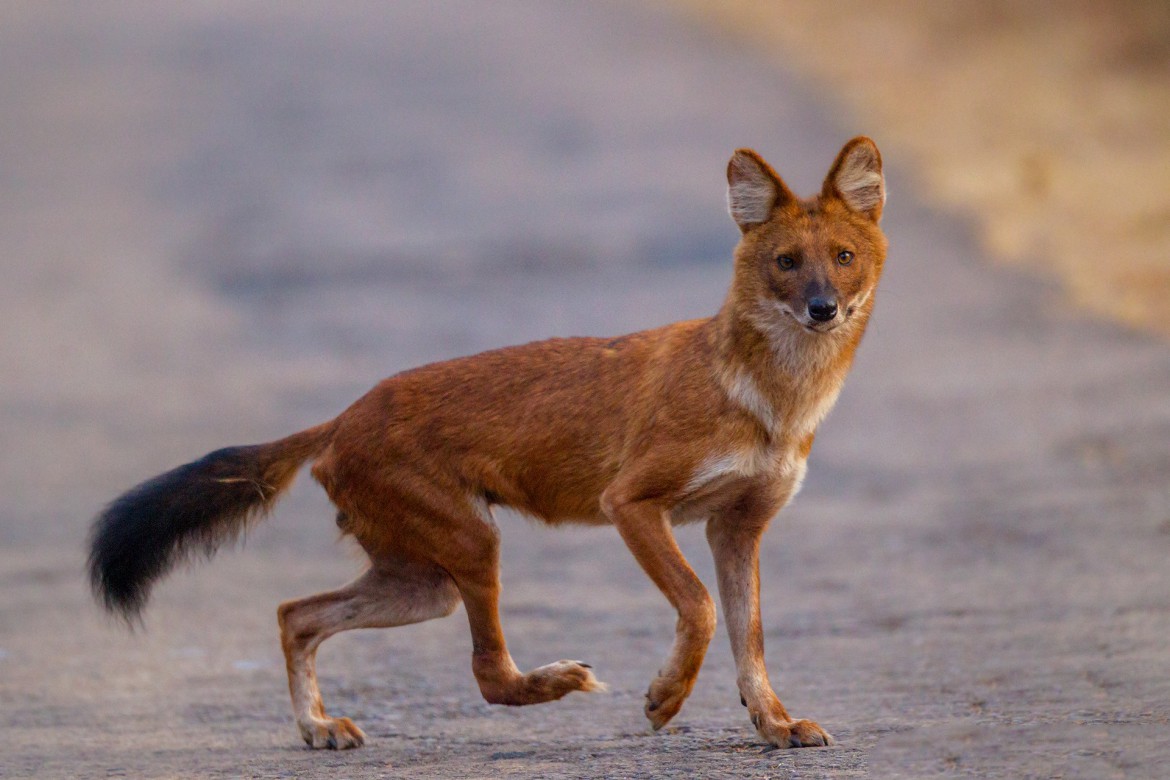
The possible earliest written use of the word in English occurred in 1808 by soldier Thomas Williamson, who encountered the animal in Ramghur district, India.
 2.1 Admixture with the African wild dog. Factors contributing to this decline include habitat loss, loss of prey, competition with other species, persecution due to livestock predation, and disease transfer from domestic dogs. It is listed as Endangered on the IUCN Red List, as populations are decreasing and estimated to comprise fewer than 2,500 mature individuals. In tropical forests, the dhole competes with the tiger ( Panthera tigris) and the leopard ( Panthera pardus), targeting somewhat different prey species, but still with substantial dietary overlap. It is a diurnal pack hunter which preferentially targets medium- and large-sized ungulates. Such clans usually consist of about 12 individuals, but groups of over 40 are known. The dhole is a highly social animal, living in large clans without rigid dominance hierarchies and containing multiple breeding females. During the Pleistocene, the dhole ranged throughout Asia, Europe, and North America but became restricted to its historical range 12,000–18,000 years ago. 10 but distinct in several anatomical aspects: its skull is convex rather than concave in profile, it lacks a third lower molar and the upper molars sport only a single cusp as opposed to between two and four. It is genetically close to species within the genus Canis, : Fig. Other English names for the species include Asian wild dog, Asiatic wild dog, Indian wild dog, whistling dog, red dog, and mountain wolf.
2.1 Admixture with the African wild dog. Factors contributing to this decline include habitat loss, loss of prey, competition with other species, persecution due to livestock predation, and disease transfer from domestic dogs. It is listed as Endangered on the IUCN Red List, as populations are decreasing and estimated to comprise fewer than 2,500 mature individuals. In tropical forests, the dhole competes with the tiger ( Panthera tigris) and the leopard ( Panthera pardus), targeting somewhat different prey species, but still with substantial dietary overlap. It is a diurnal pack hunter which preferentially targets medium- and large-sized ungulates. Such clans usually consist of about 12 individuals, but groups of over 40 are known. The dhole is a highly social animal, living in large clans without rigid dominance hierarchies and containing multiple breeding females. During the Pleistocene, the dhole ranged throughout Asia, Europe, and North America but became restricted to its historical range 12,000–18,000 years ago. 10 but distinct in several anatomical aspects: its skull is convex rather than concave in profile, it lacks a third lower molar and the upper molars sport only a single cusp as opposed to between two and four. It is genetically close to species within the genus Canis, : Fig. Other English names for the species include Asian wild dog, Asiatic wild dog, Indian wild dog, whistling dog, red dog, and mountain wolf. 
The dhole ( / d oʊ l/ Cuon alpinus) is a canid native to Central, South, East, and Southeast Asia.






 0 kommentar(er)
0 kommentar(er)
